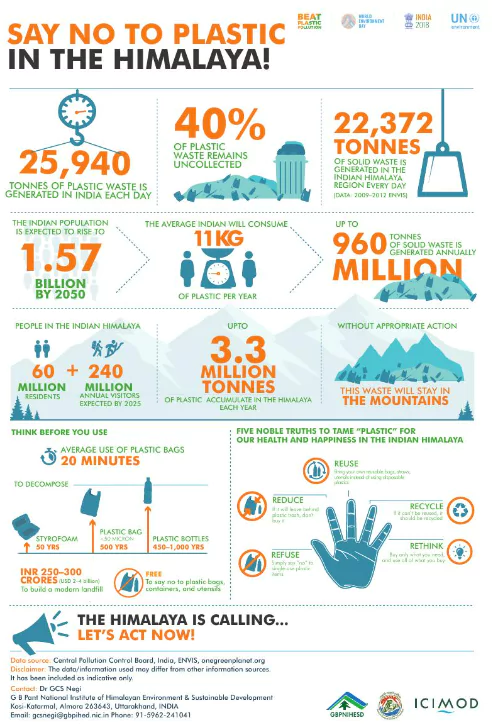![]() 4 Mar 2024
4 Mar 2024

This editorial is based on the news “Mountains of plastic are choking the Himalayan States” which was published in The Hindu. The report of Social Development for Communities (SDC) Foundation Dehradun highlights the challenge of Plastic waste across most mountainous states of India.
| Relevance for prelims: Plastic Pollution, Microplastics, Single Use Plastic, Plastic Overshoot Day, Challenge of Plastic
Relevancy for Mains: Conservation, Environmental Degradation and Pollution, Challenge of Plastic |
|---|
|
|---|

Initiatives by Himalayan States:
|
|---|
| Mains Question: What is oil pollution? What are its impacts on the marine ecosystem? In what way is oil pollution particularly harmful for a country like India? (200 words, 10 marks) |
|---|
| Must Read | |
| NCERT Notes For UPSC | UPSC Daily Current Affairs |
| UPSC Blogs | UPSC Daily Editorials |
| Daily Current Affairs Quiz | Daily Main Answer Writing |
| UPSC Mains Previous Year Papers | UPSC Test Series 2024 |

<div class="new-fform">
</div>